ICON: NASA's Ionospheric Connection Explorer Satellite Mission in Pictures

A NASA ICON
On Oct. 10, 2019, a Northrop Grumman Pegasus XL rocket launched NASA's Ionospheric Connection Explorer satellite into orbit in a mid-air liftoff from an L-1011 Stargazer jet.
Full story: NASA Launches ICON Space Weather Satellite to Study Ionosphere
The mission, delayed from 2017, aims to understand how solar wind and other space weather phenomena interact with the ionosphere, a layer of Earth's upper atmosphere that begins 62 miles (100 kilometers) up.
See photos from the ICON satellite's launch and mission preparations here by clicking the arrows for more images.
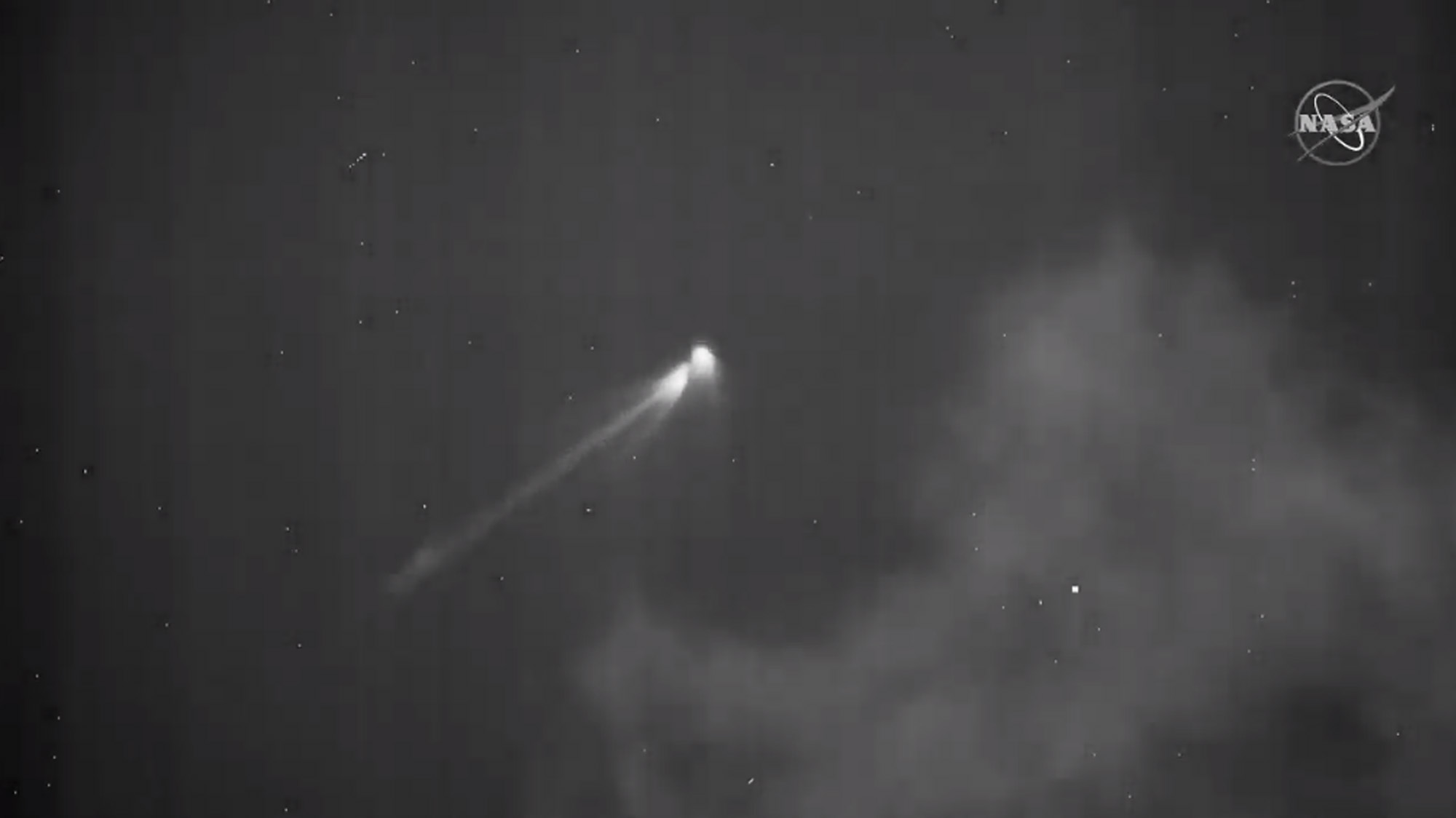
Liftoff!
After more than a year of delays, NASA's ICON satellite launched into orbit on Oct. 10, 2019, rocketing into space at 10 p.m. EDT (0200 GMT) atop a Northrop Grumman Pegasus XL rocket.
The Pegasus XL rocket is a three-stage solid-fueled booster designed to be dropped from an altitude of 39,000 feet to launch a satellite. For ICON, the Stargazer pilot took off from the Skid Strip runway of Cape Canaveral Air Force Station in Florida, then flew out over the Atlantic Ocean to a drop point about 50 miles east of Daytona Beach.
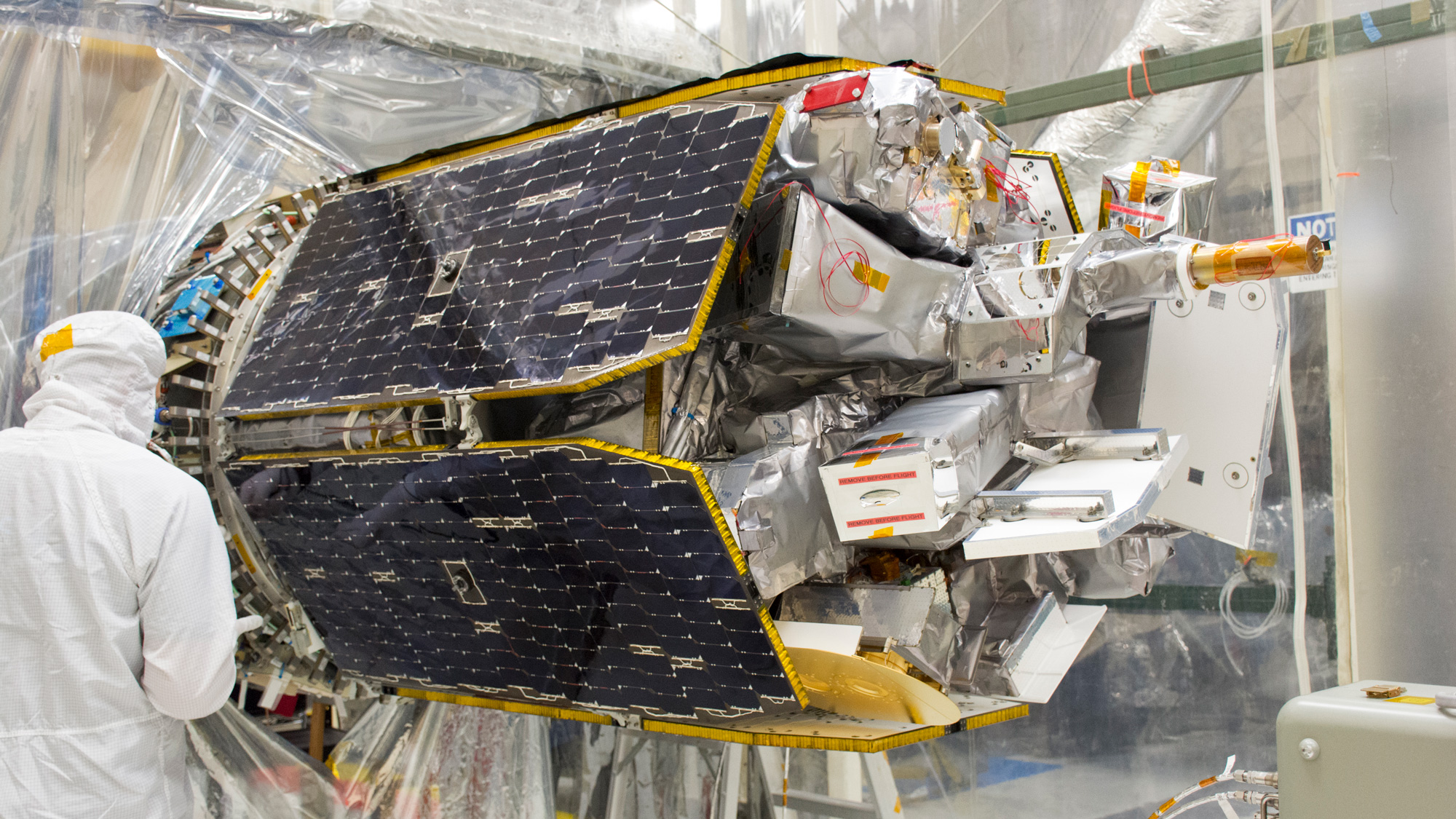
ICON Up Close
Here's a close look at NASA's ICON satellite. The $252 million spacecraft weighs 634 lbs. (288 kilograms), is just over 6 feet long and is about just under 4 feet wide. It's about the size of a large refrigerator, NASA officials have said.
ICON is powered by a solar array that is visible here wrapped around the barrel-shaped spacecraft. When deployed, the solar array unfurls to be about the size of a door (100 inches long and 33 inches wide).
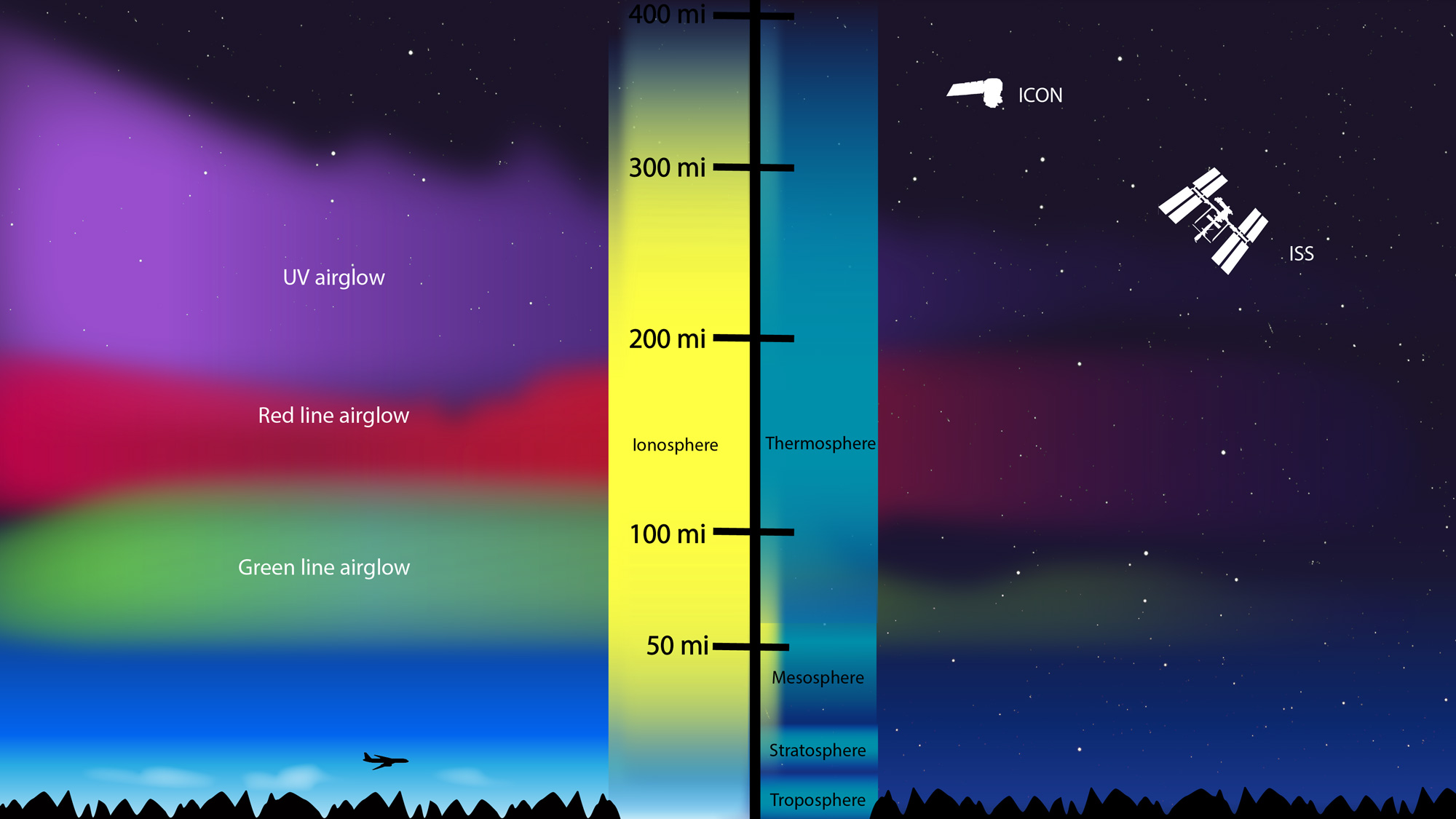
To the Ionosphere
From NASA:
NASA's ICON mission will orbit above the upper atmosphere, through the bottom edge of near-Earth space. From this vantage point, ICON will be able to observe both the upper atmosphere -- made of neutral particles -- and a layer of charged particles called the ionosphere, which extends from about 50 to 360 miles above the surface of Earth.
Processes in the ionosphere also create bright swaths of color in the sky, known as airglow. ICON will observe how interactions between terrestrial weather and the ionosphere create such shimmering airglow as well as other changes in the space environment.
Video: Watch NASA Air-Launch the ICON Space Weather Satellite
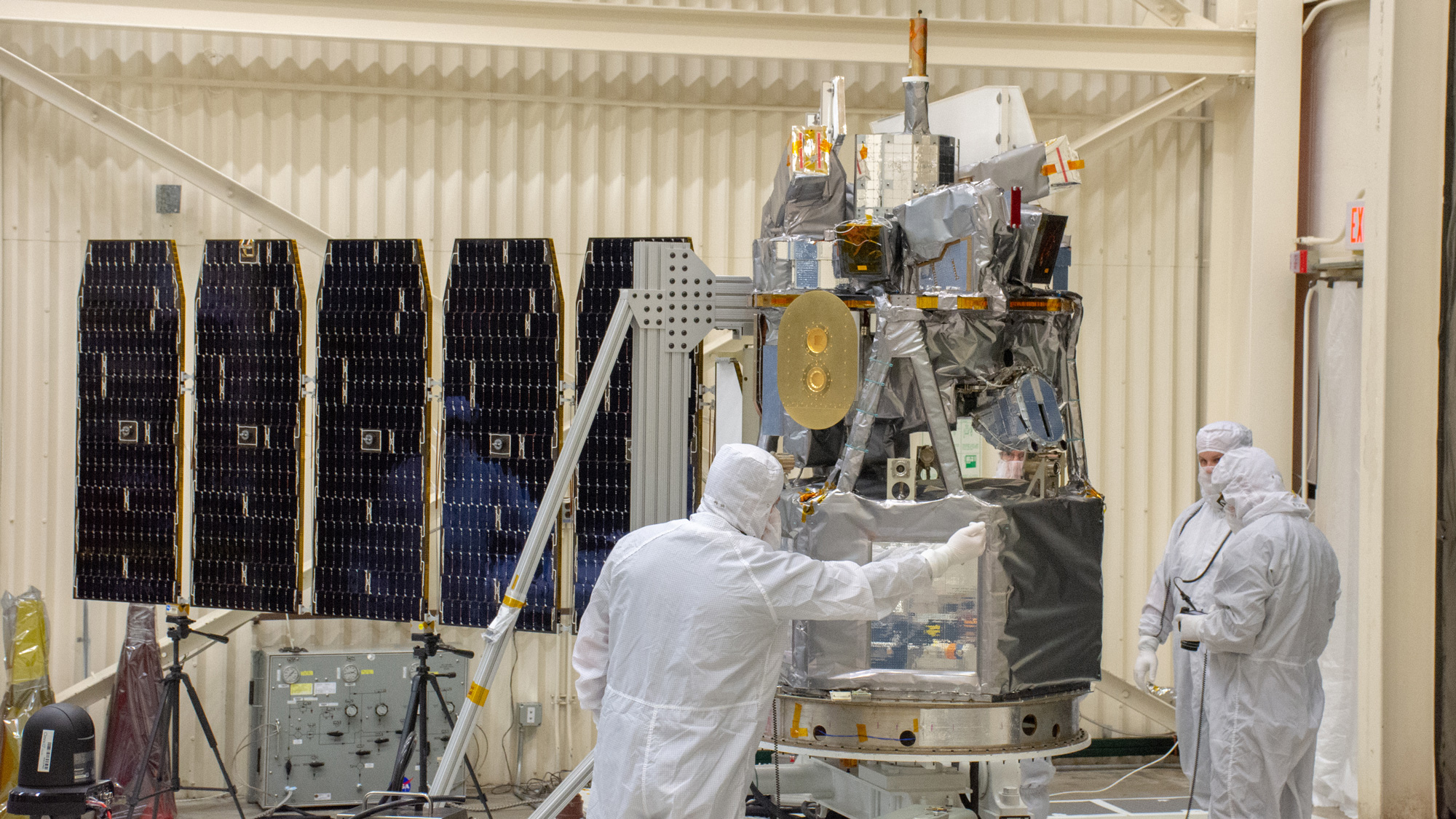
Inspecting ICON
Here, technicians extend the solar array on NASA's Ionospheric Connection Explorer (ICON) during a deployment test inside Building 1555 at Vandenberg Air Force Base in California on Aug. 10, 2019.
It's been a long road to space for NASA's ICON. The mission was originally scheduled to launch in 2017, but was delayed due to issues with its Pegasus XL rocket. Attempts to launch it in 2018 were also delayed by technical glitches.
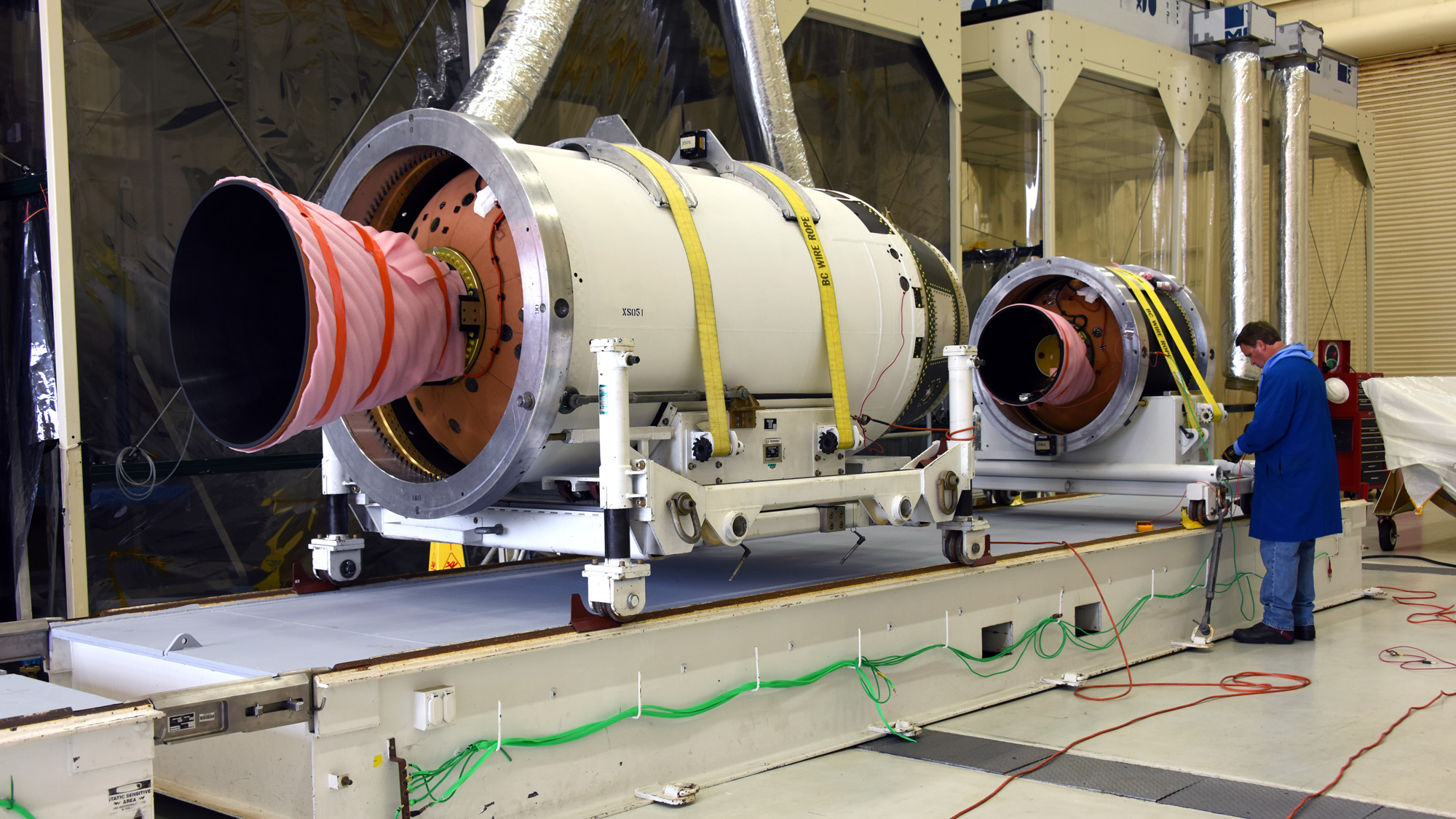
Pegasus Parts
Here, the second and third stages of the Pegasus XL rocket to launch ICON are unloaded prior to assembly.
Built by Northrop Grumman Innovation Systems, the Pegasus XL rocket is a solid-fueled booster designed to launch small satellites into orbit after being dropped from an altitude of 39,000 feet.
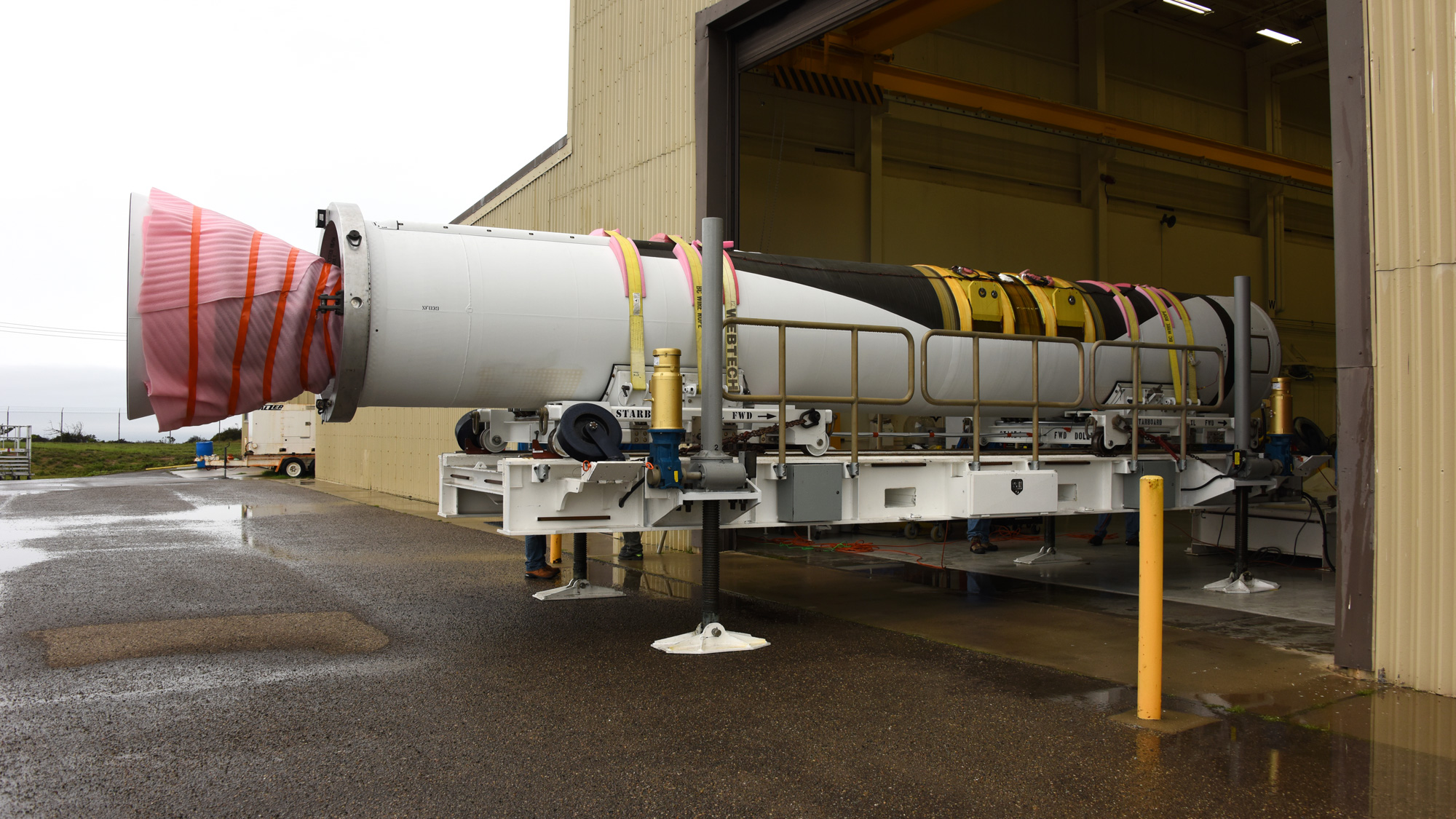
The First Stage
This NASA image shows the first stage of the Pegasus XL rocket that launched ICON.
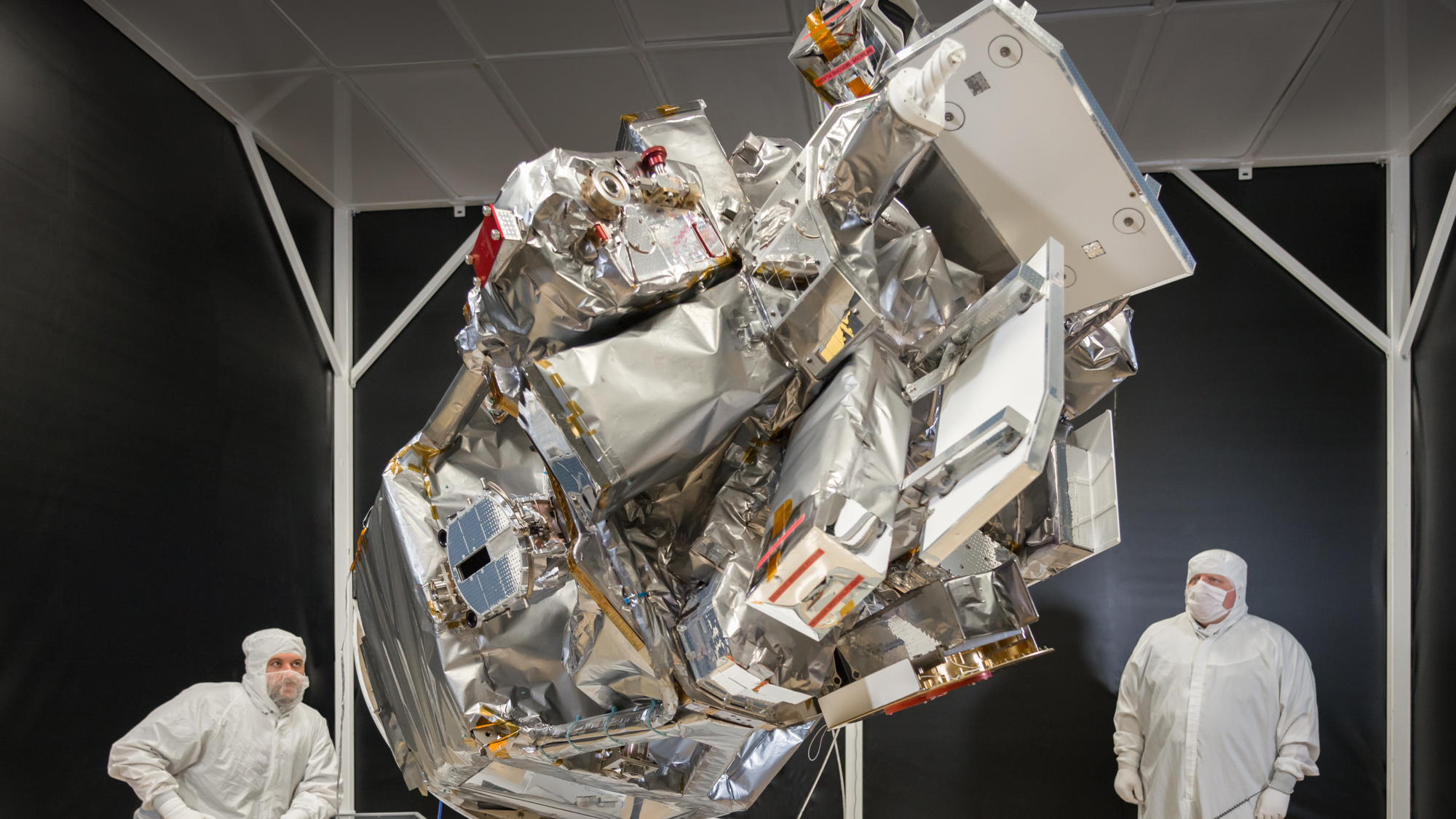
NASA's Ionospheric Connection Explorer (ICON) is tilted on a work stand June 12, 2017 at a then-Orbital ATK facility in Gilbert, Arizona as technicians work to prepare it for launch.
ICON is carrying four different instruments to study Earth's ionosphere to measure how space weather, like solar wind, interact with the atmospheric layer. Airglow at the edge of the atmosphere is a chief target.
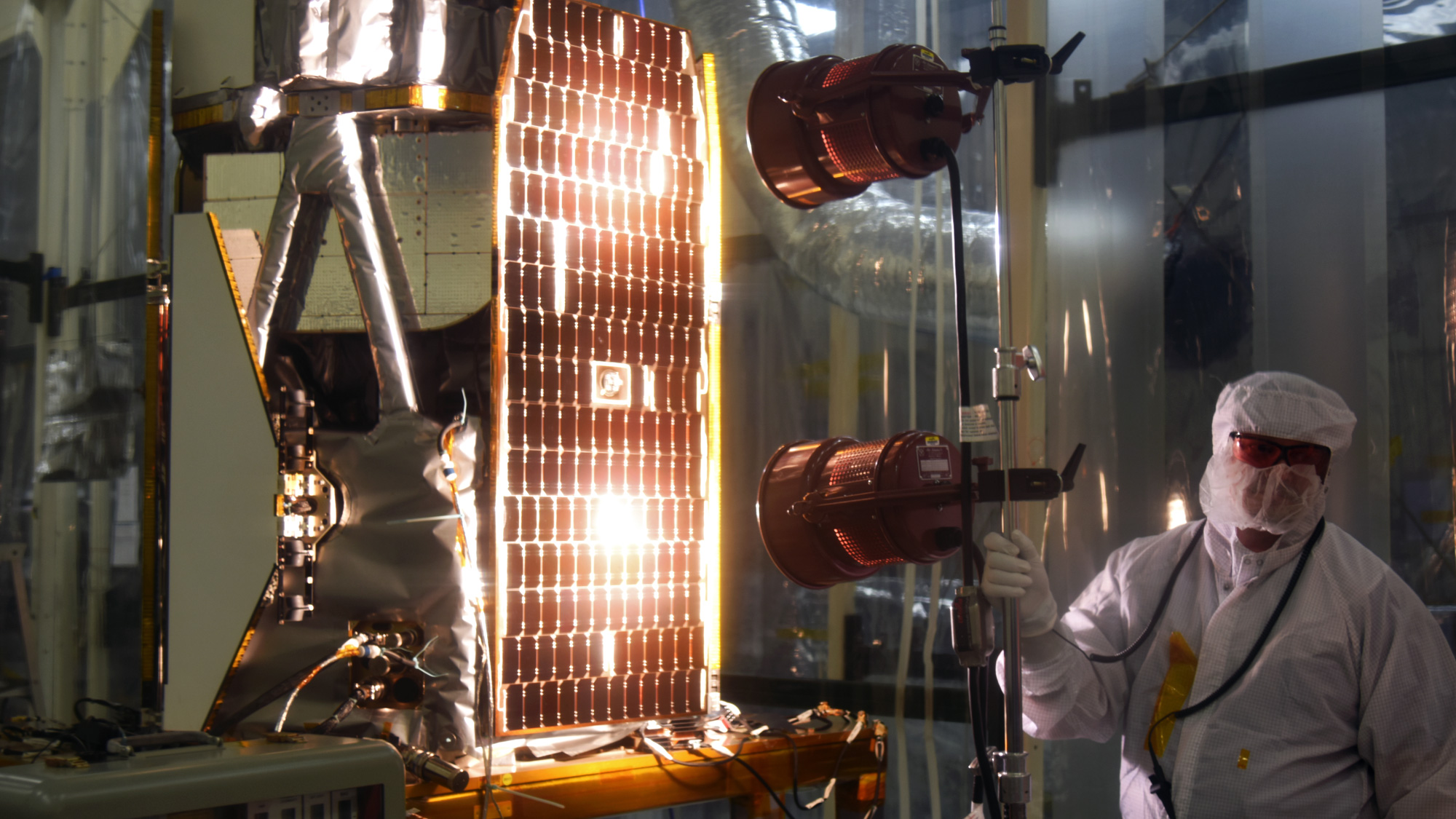
From NASA:
A solar array illumination test is performed on NASA's Ionospheric Connection Explorer (ICON) in a clean room on May 4, 2018, inside Building 1555 at Vandenberg Air Force Base in California. The test checked for any imperfections and confirms that the solar arrays are functioning properly.
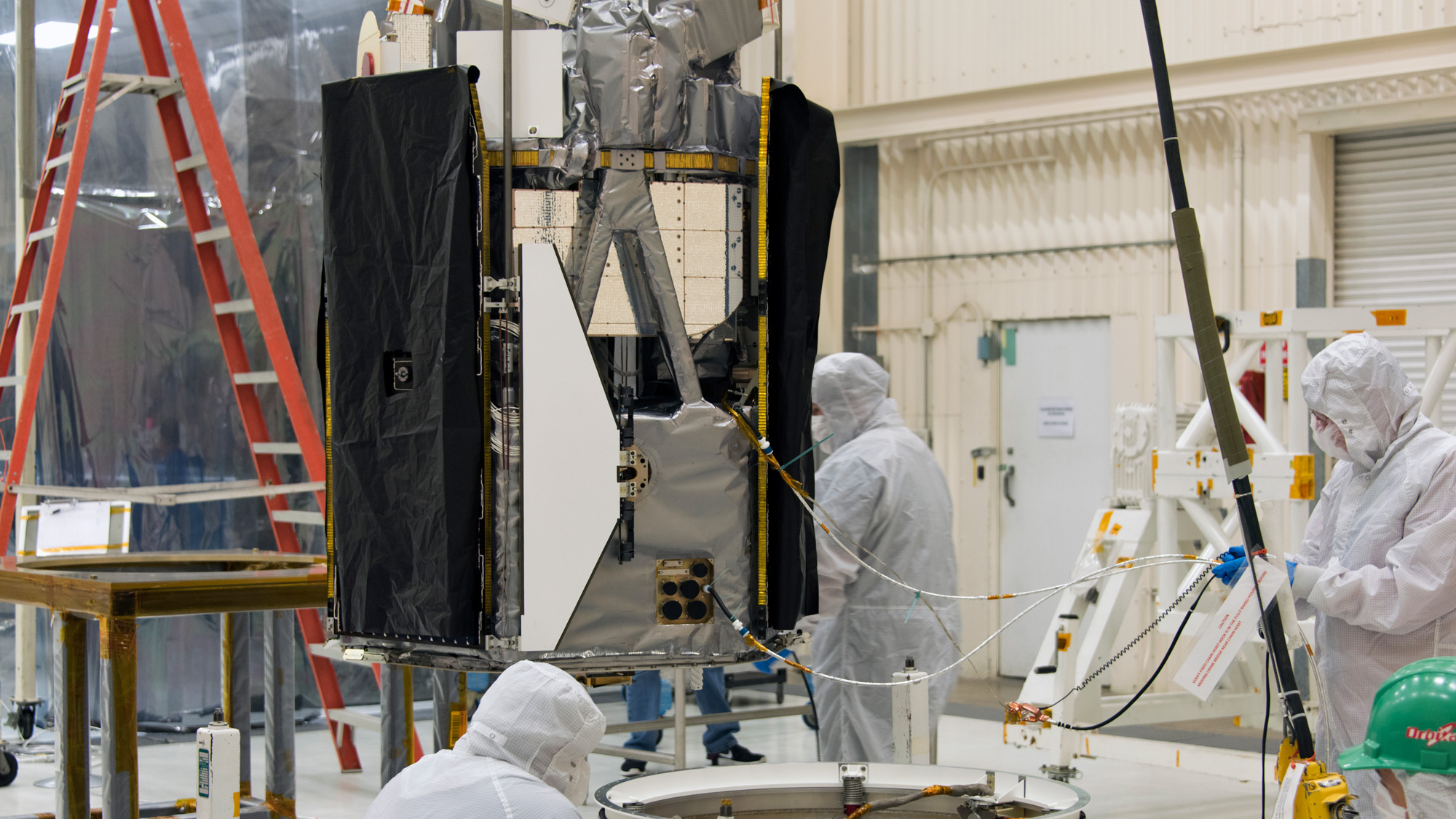
Here, technicians prepare ICON to be attached to the spacecraft separation system May 9, 2018, in a clean room at Vandenberg Air Force Base in California.
ICON has gone through a series of launch changes in the two years to liftoff. Initially, the mission was to be staged from the U.S. Army's range at Kwajalein Atoll in the Pacific Ocean. That was later changed to Vandenberg Air Force Base in California, and ultimately to Cape Canaveral Air Force Station in Florida.
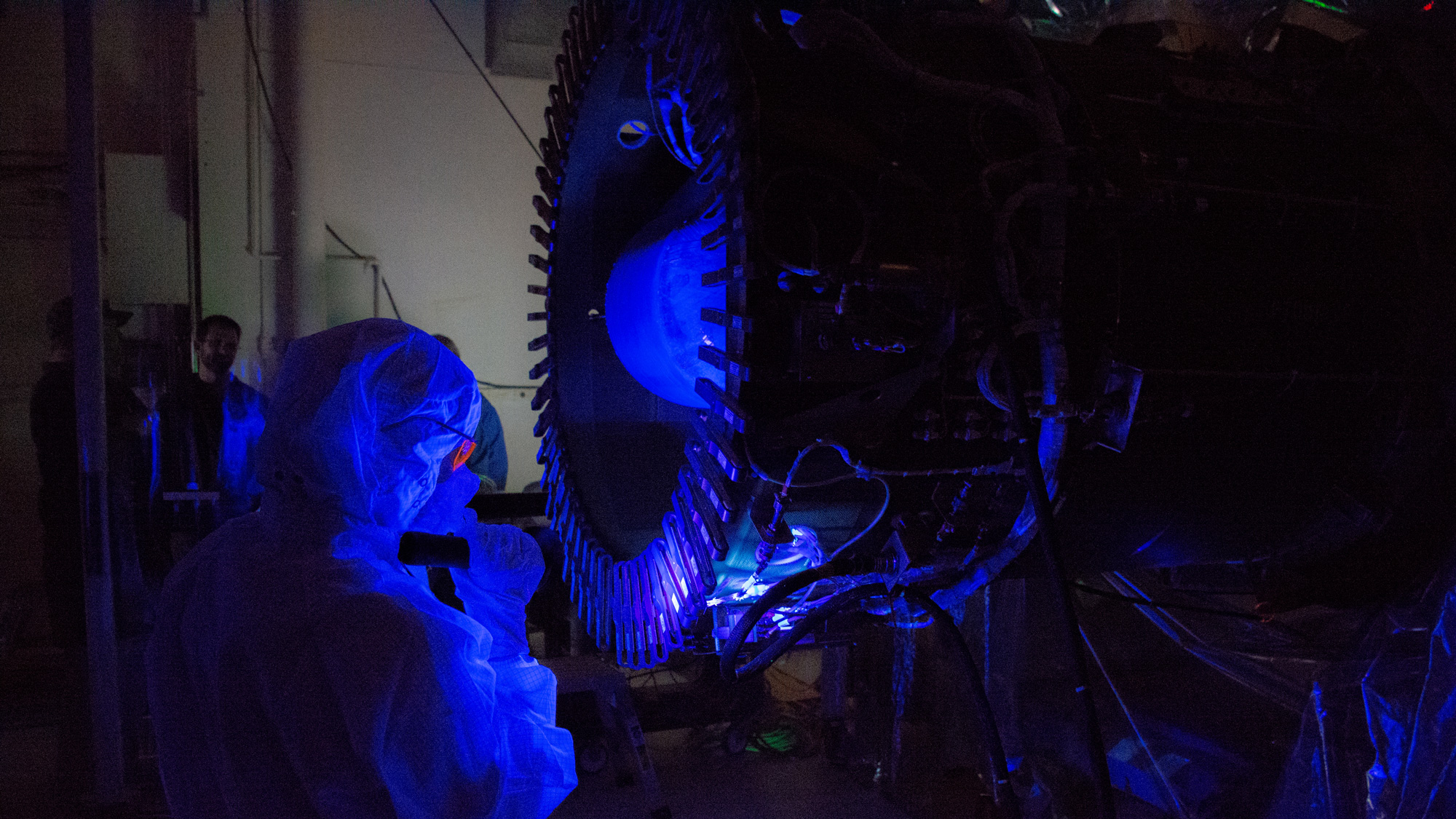
From NASA:
A technician performs a black light inspection of the Orbital ATK Pegasus starboard on May 22, 2018, prior to fully mating NASA's Ionospheric Connection Explorer (ICON) to Pegasus inside Building 1555 at Vandenberg Air Force Base in California. The explorer will launch on June 15, 2018, from Kwajalein Atoll in the Marshall Islands (June 14 in the continental United States) on the Pegasus XL, which is attached to the company's L-1011 Stargazer aircraft. ICON will study the frontier of space - the dynamic zone high in Earth's atmosphere where terrestrial weather from below meets space weather above. The explorer will help determine the physics of Earth's space environment and pave the way for mitigating its effects on our technology and communications systems.
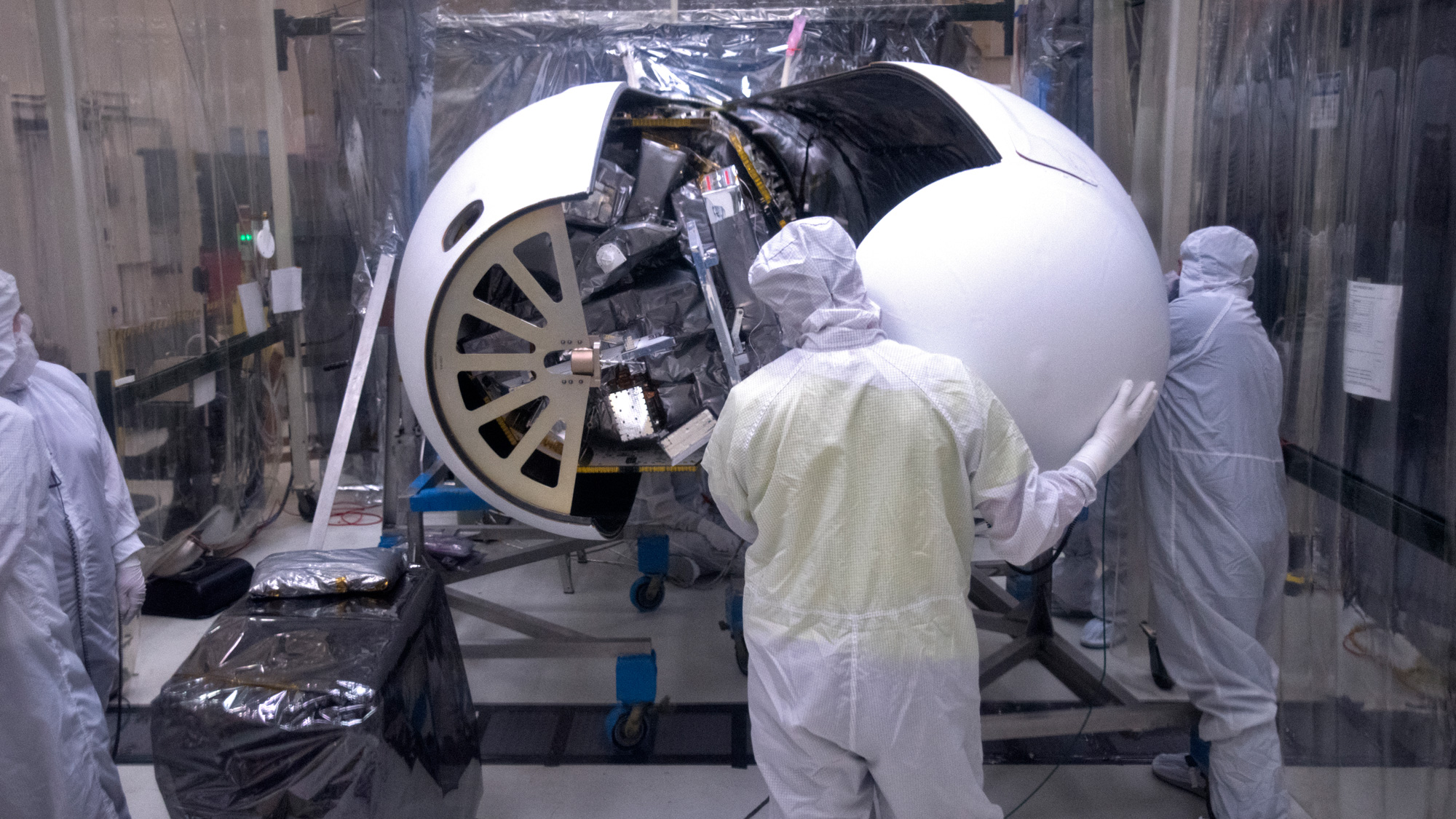
From NASA:
Inside a clean room in Building 1555 at Vandenberg Air Force Base in California, technicians begin to install the second half of the Northrop Grumman Pegasus XL payload fairing around NASA's Ionospheric Connection Explorer (ICON) on Oct. 4, 2018.
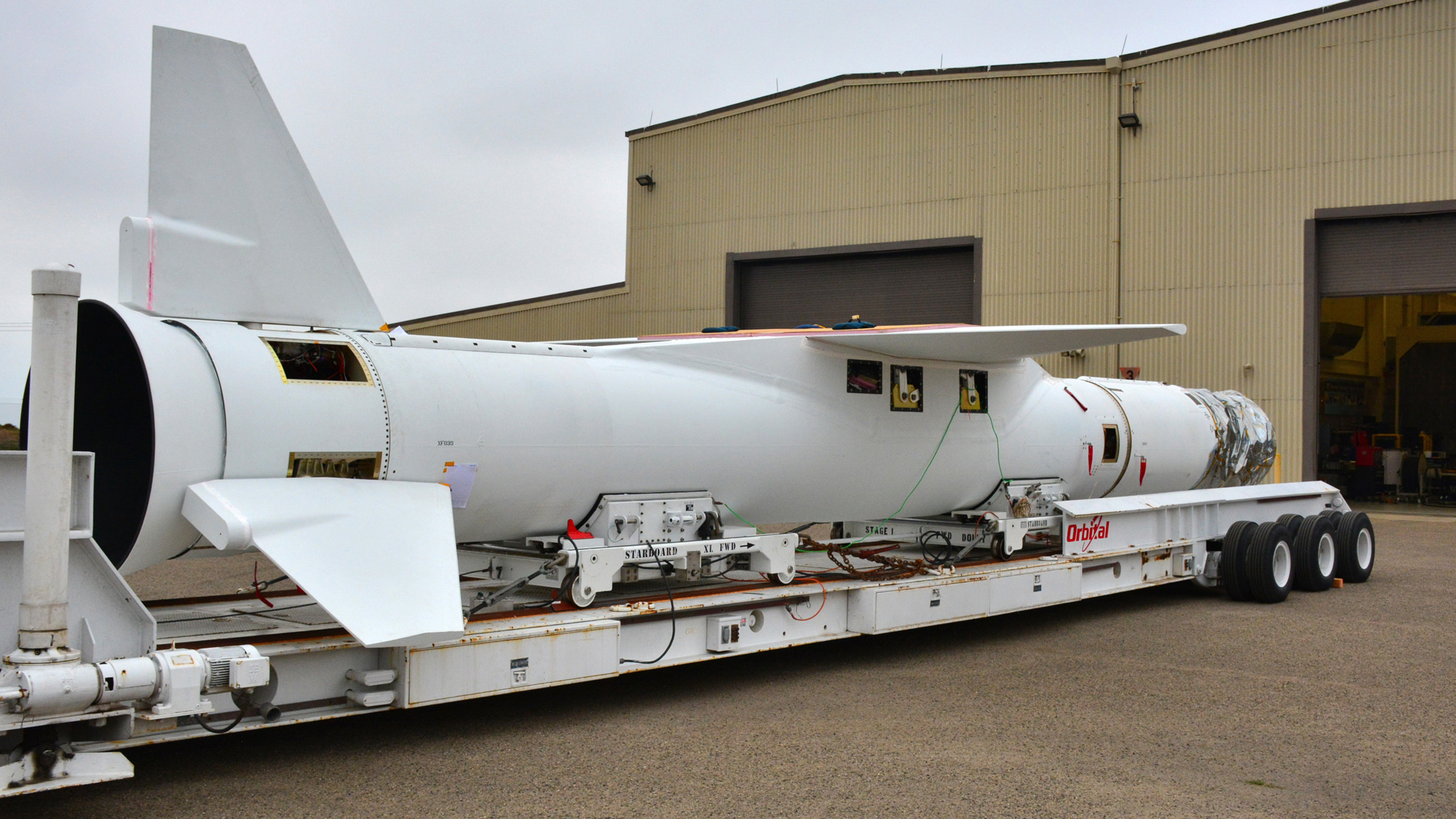
From NASA:
The Orbital ATK Pegasus XL rocket, with NASA's Ionospheric Connection Explorer (ICON) spacecraft attached, is moved on an assembly integration trailer from one high bay to another Aug. 23, 2017, at Building 1555 at Vandenberg Air Force Base in California. The Pegasus rocket is being prepared for the ICON mission.
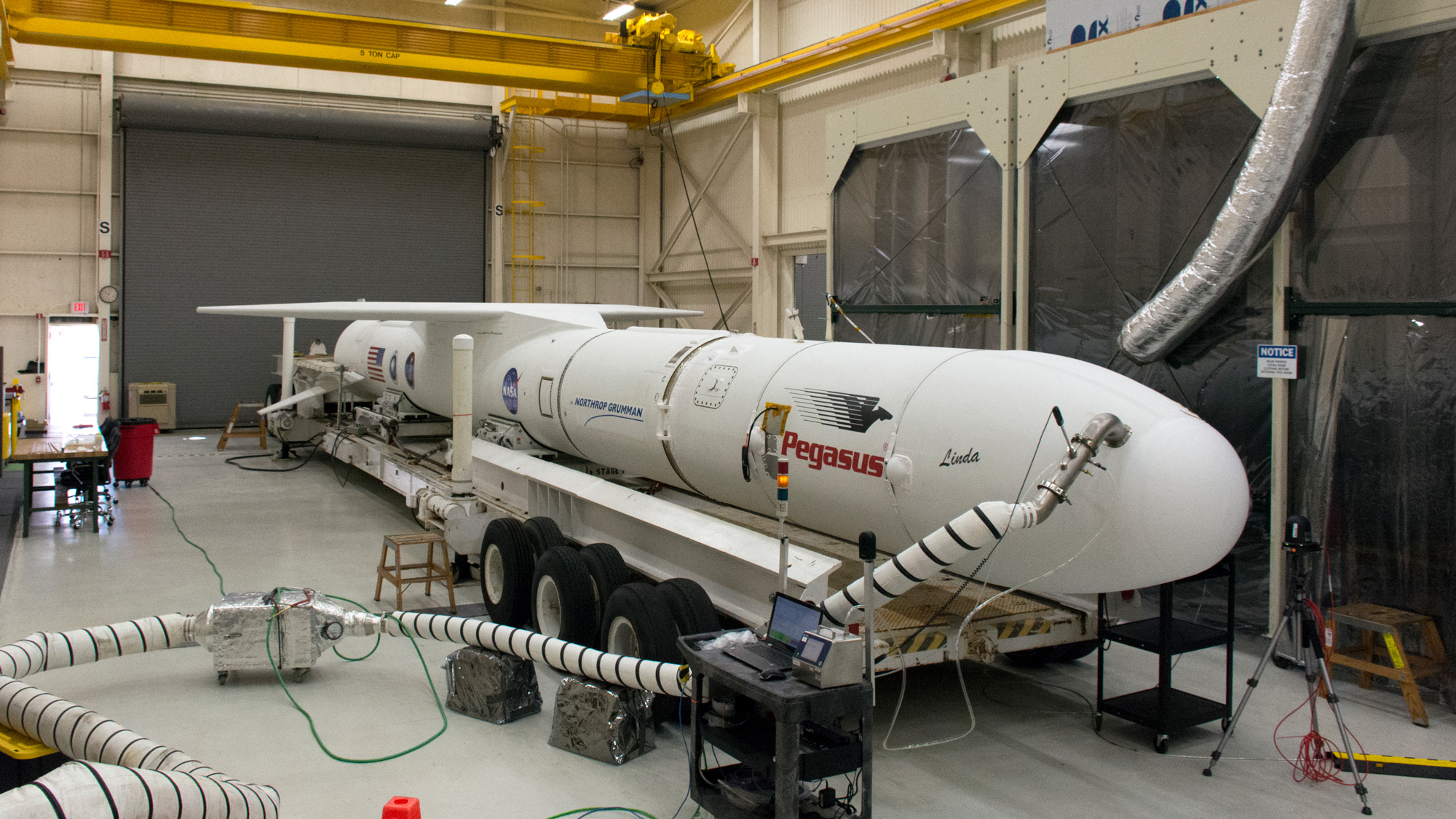
From NASA:
The Northrop Grumman Pegasus XL vehicle is being prepared for its move from Building 1555 to the hot pad at Vandenberg Air Force Base in California, on Oct. 14, 2018. NASA's Ionospheric Connection Explorer (ICON) is secured inside the rocket's payload fairing.
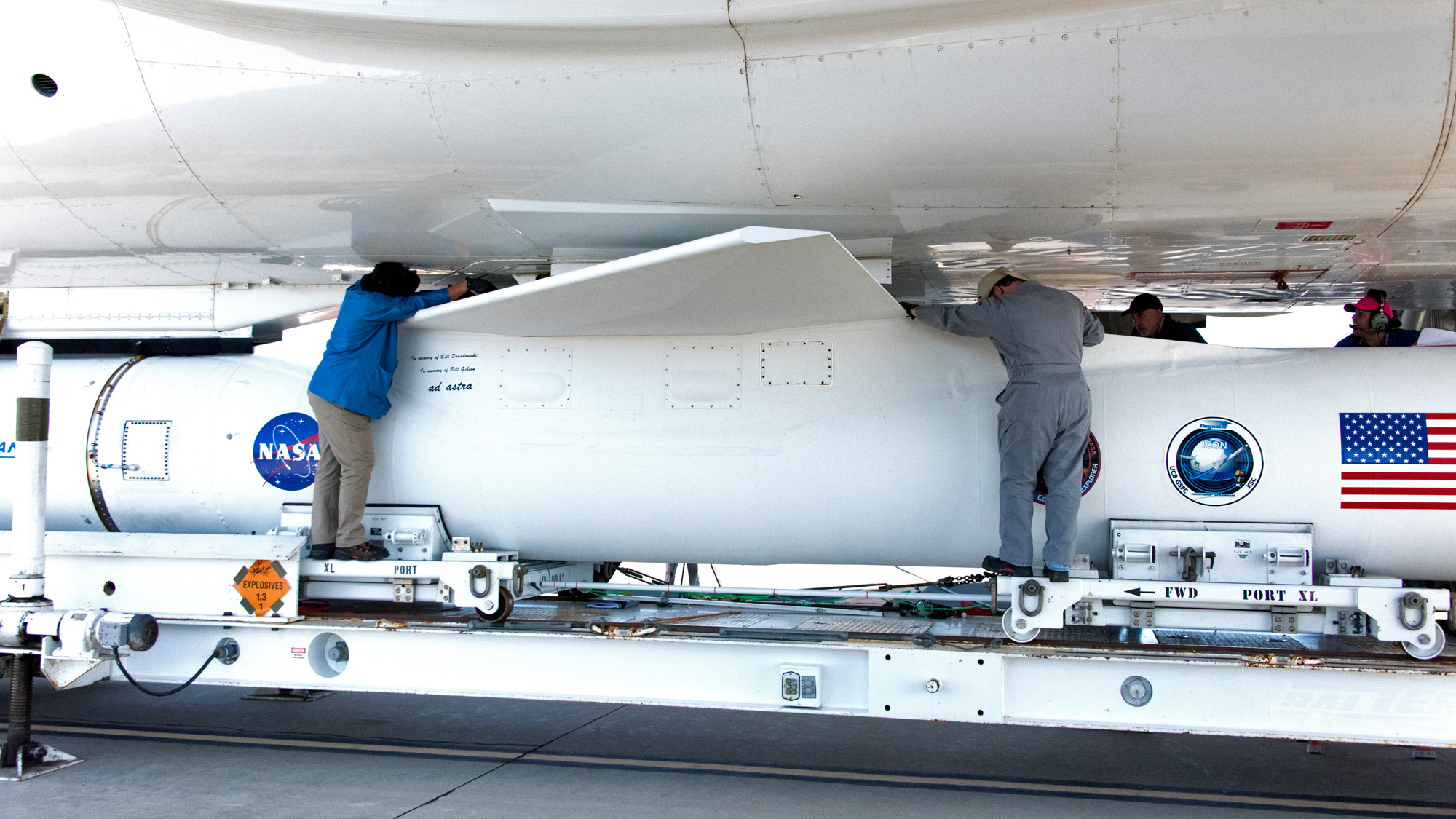
From NASA:
Technicians secure Northrop Grumman's Pegasus XL rocket, containing NASA's Ionospheric Connection Explorer (ICON), beneath the company's L-1011 Stargazer aircraft at the hot pad at Vandenberg Air Force Base in California, on Oct. 14, 2018.
By October 2018, ICON's launch staging site had already been changed to Cape Canaveral Air Force Station. Its L-1011 Stargazer carrier plane took off from the Skid Strip at the station.
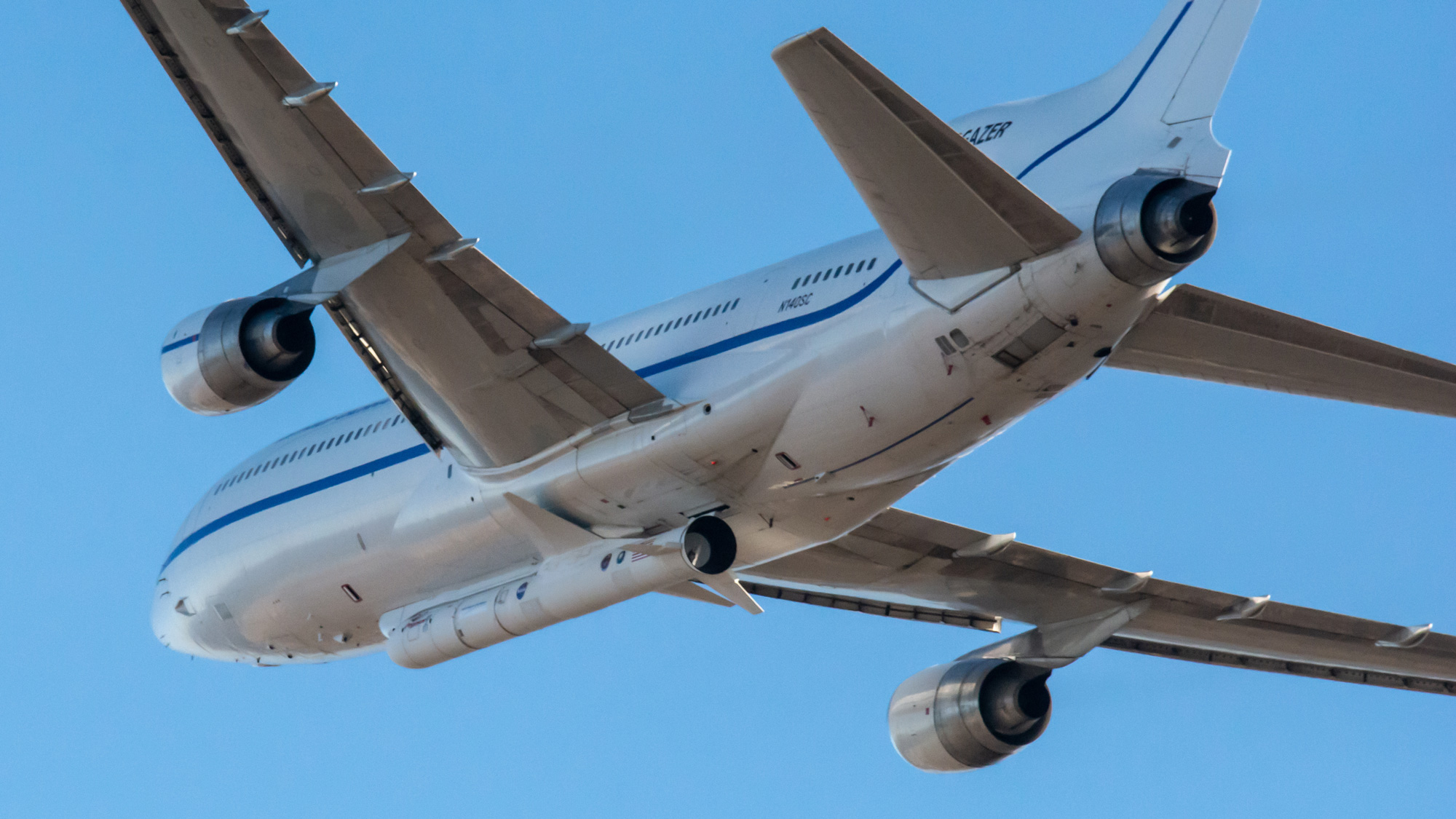
From NASA:
Northrop Grumman's L-1011 Stargazer takes off from Vandenberg Air Force Base in California on Oct. 1, 2019. The company's Pegasus XL rocket, containing NASA's Ionospheric Connection Explorer (ICON), is attached beneath the aircraft.

From NASA:
Northrop Grumman's L-1011 Stargazer soars upward after takeoff from the hot pad at Vandenberg Air Force Base in California on Oct. 19, 2018.
NASA's ICON satellite will spend at least two years studying the connection between Earth's ionosphere and space weather.

Tariq is the Editor-in-Chief of Space.com and joined the team in 2001, first as an intern and staff writer, and later as an editor. He covers human spaceflight, exploration and space science, as well as skywatching and entertainment. He became Space.com's Managing Editor in 2009 and Editor-in-Chief in 2019. Before joining Space.com, Tariq was a staff reporter for The Los Angeles Times covering education and city beats in La Habra, Fullerton and Huntington Beach. In October 2022, Tariq received the Harry Kolcum Award for excellence in space reporting from the National Space Club Florida Committee. He is also an Eagle Scout (yes, he has the Space Exploration merit badge) and went to Space Camp four times as a kid and a fifth time as an adult. He has journalism degrees from the University of Southern California and New York University. You can find Tariq at Space.com and as the co-host to the This Week In Space podcast with space historian Rod Pyle on the TWiT network. To see his latest project, you can follow Tariq on Twitter @tariqjmalik.









